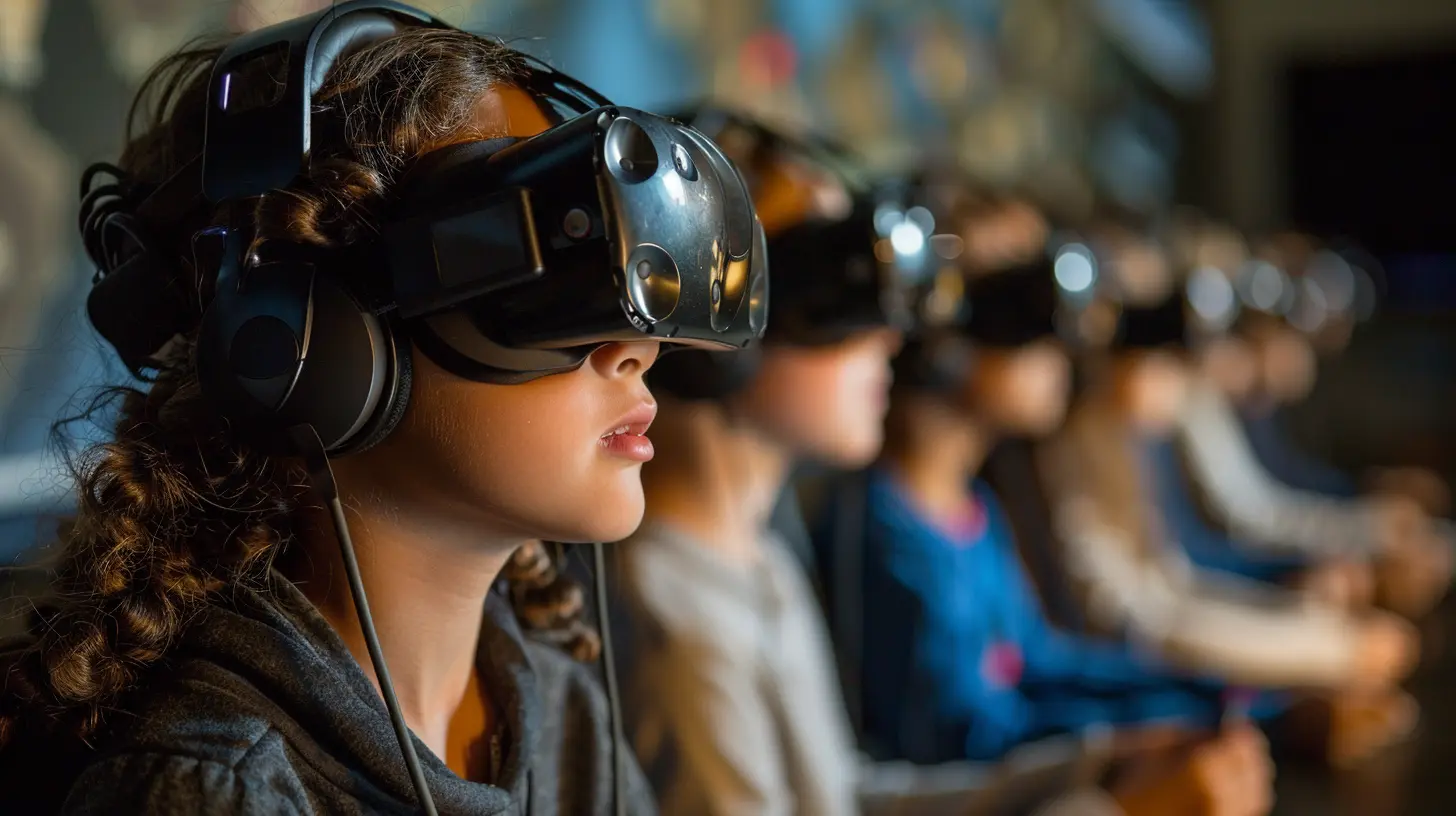Integrating Virtual Field Trips into Your Classroom Experience
2 November 2025
When was the last time you took your class on a field trip? I get it—planning a traditional field trip can feel like a logistical nightmare. Between securing permissions, organizing transportation, and worrying about students wandering off, it can be more stress than it’s worth. But what if I told you that you could take your students to the Great Wall of China, explore the depths of the ocean, or visit a museum halfway across the world without ever leaving the classroom? Yep, I’m talking about virtual field trips!
Virtual field trips are an absolute game-changer in education. In today’s tech-driven world, integrating virtual field trips into your classroom experience can offer students all the benefits of traditional field trips—engagement, real-world learning, and exposure to new environments—without any of the headaches. In this article, we’ll dive deep into what virtual field trips are, how they can benefit your students, and some tips on how to seamlessly integrate them into your teaching routine.

What Are Virtual Field Trips?
So, what exactly is a virtual field trip? In simple terms, a virtual field trip is an online exploration of a location or environment that allows students to visit places they wouldn’t otherwise be able to go to. These trips can range from highly interactive experiences, where students can "walk around" and click on objects to learn more, to more passive virtual tours that are guided by videos or images.Virtual field trips can be live-streamed in real-time or pre-recorded, offering a wide range of flexibility for educators. Some virtual trips even incorporate augmented reality (AR) or virtual reality (VR), where students can immerse themselves in a 360-degree environment. Essentially, virtual field trips bring the world to your classroom without the need for bus rides and packed lunches.

Why Should You Consider Virtual Field Trips?
Now, you might be wondering, "Why should I bother with virtual field trips when I can just show a video or read a textbook?" That’s a fair question. But here’s the thing—virtual field trips offer something that traditional teaching methods can’t: active engagement and real-world context.1. Enhancing Engagement and Interest
Let’s face it—students can sometimes struggle to stay interested in the material. Virtual field trips offer a dynamic, interactive experience that can capture their attention in ways that textbooks and lectures can’t. Imagine teaching a lesson on ancient Egypt and then whisking your students off to virtually explore the pyramids. Suddenly, the content becomes more tangible and real.2. Accessibility for All Students
Traditional field trips can be costly, and not all students have the financial means to participate. Virtual field trips level the playing field by providing access to experiences that might otherwise be out of reach—whether it’s due to cost, geography, or physical limitations. Plus, you can do it all without leaving the classroom, which is especially beneficial during unpredictable times like pandemics or inclement weather.3. Bringing Real-World Context to The Classroom
Virtual field trips allow students to make meaningful connections between what they’re learning in the classroom and the real world. For example, if you’re teaching a unit on marine biology, a virtual field trip to an aquarium or a coral reef can deepen students' understanding of ocean ecosystems. It’s one thing to talk about how plastic pollution affects marine life, but it’s another thing entirely for students to see it firsthand through a virtual dive.4. Cost-Effective and Time-Saving
As mentioned earlier, traditional field trips can be expensive and time-consuming to plan. Virtual field trips eliminate transportation costs, entry fees, and the need for extensive planning. They also save you from the inevitable stress of keeping track of 30+ students in a crowded museum.5. Supporting Different Learning Styles
We know that not all students learn in the same way. Some students thrive on visual and hands-on experiences, while others prefer reading or listening. Virtual field trips offer a flexible learning environment that can cater to different learning styles. Whether it’s a 360-degree immersive experience or a guided video tour, virtual field trips can accommodate various preferences and abilities.
How to Integrate Virtual Field Trips into Your Classroom
Now that you’re sold on the idea of virtual field trips, you’re probably wondering how to go about integrating them into your lessons. Don’t worry—I’ve got you covered. Here’s a step-by-step guide to help you seamlessly incorporate virtual field trips into your classroom experience.1. Align the Trip with Your Curriculum
The first step is to ensure the virtual field trip aligns with your lesson objectives. What are you trying to teach? Whether it’s history, science, or art, there’s likely a virtual field trip that can complement your curriculum. Take some time to research options and choose a trip that reinforces the concepts you’re covering in class.For example, if you’re teaching a unit on space exploration, NASA offers several virtual tours of their facilities. Or, if you’re diving into a literature unit, you could take a virtual tour of Shakespeare’s Globe Theatre. The key is to make sure the trip enhances what your students are already learning.
2. Prepare Your Students
Just like with a traditional field trip, preparation is key. Before the virtual trip, introduce the destination to your students. Explain why you’re "visiting" the location and what they should look out for. You could even assign pre-trip activities, such as reading an article or watching a short video about the location, to build up excitement and anticipation.3. Incorporate Interactive Elements
One of the best things about virtual field trips is that many are interactive. Encourage your students to actively participate by asking questions, exploring clickable objects, or completing a virtual scavenger hunt. The more involved they are, the more they’ll get out of the experience.If the platform allows, have students split into small groups to explore different parts of the virtual environment and report back what they’ve learned. This approach fosters collaboration while also making the experience more personal.
4. Debrief and Reflect
After the virtual field trip, it’s essential to debrief and reflect on the experience. This is where the real learning happens. Ask your students to share their thoughts—what did they find most interesting? Did anything surprise them? How does the virtual trip connect to what they’ve been learning in class?You can also assign follow-up activities, such as a reflective journal entry, a group discussion, or a project based on the trip. The goal is to reinforce the learning and give students a chance to process the experience.
5. Use Virtual Field Trips for Cross-Curricular Learning
One of the coolest things about virtual field trips is that they can be used to support cross-curricular learning. For example, a virtual trip to a historical site could tie into both a history lesson and an art class. Similarly, a virtual visit to a national park could support science, geography, and even writing assignments.By integrating virtual field trips into multiple subject areas, you give students a well-rounded, interdisciplinary learning experience.

Recommended Virtual Field Trip Resources
Ready to dive into the world of virtual field trips but not sure where to start? Here are a few resources that offer high-quality virtual field trip experiences:1. Google Arts & Culture
Google’s Arts & Culture platform offers virtual tours of museums, landmarks, and cultural sites around the world. You can take your students to the Louvre, explore ancient Mayan ruins, or check out street art in different cities.2. National Geographic
National Geographic provides immersive virtual field trips that cover a range of topics, from wildlife to geography. Students can explore the depths of the ocean, visit Antarctica, or follow the migration patterns of animals.3. NASA
NASA offers a variety of virtual tours of its facilities, including the Kennedy Space Center and the International Space Station. These trips are perfect for students interested in space exploration and STEM topics.4. Discovery Education
Discovery Education offers virtual field trips on a variety of topics, including science, technology, and history. These trips are designed to be interactive and engaging, making them a great addition to any classroom.5. Smithsonian National Museum of Natural History
The Smithsonian provides virtual tours of its exhibits, including the famous dinosaur hall and the Hall of Human Origins. This tour is perfect for students studying natural history, biology, or anthropology.Overcoming Challenges with Virtual Field Trips
While virtual field trips offer numerous benefits, they’re not without their challenges. Some schools may not have access to the necessary technology, or you might encounter technical difficulties during the trip. Here are a few tips for overcoming these challenges:- Ensure Reliable Internet Access: Before the trip, test your internet connection and make sure the website or platform is accessible on your school’s network.
- Have a Backup Plan: Technology can be unpredictable, so always have a backup activity or video ready in case things don’t go as planned.
- Provide Options for Students with Limited Access: If some students don’t have access to the necessary technology at home, consider offering an alternative assignment or scheduling extra time in the classroom for them to complete the virtual trip.
Conclusion
Incorporating virtual field trips into your classroom can open up a world of possibilities—literally! Not only do they enhance student engagement and provide real-world learning opportunities, but they’re also cost-effective, accessible, and easy to integrate into your existing curriculum. Whether you’re exploring ancient ruins, diving into the ocean, or visiting a world-class museum, virtual field trips offer an exciting way to bring your lessons to life. So, the next time you’re looking for a way to spice up your classroom experience, why not take your students on a virtual adventure?all images in this post were generated using AI tools
Category:
Virtual ClassroomsAuthor:

Olivia Chapman
Discussion
rate this article
1 comments
Lumen McIntire
Embrace virtual field trips as transformative tools! They spark curiosity, broaden horizons, and make learning engaging. Let technology take your students on incredible journeys!
November 2, 2025 at 4:21 AM

Olivia Chapman
Thank you for your enthusiastic comment! I completely agree—virtual field trips truly enrich the learning experience by igniting curiosity and expanding students' perspectives.


